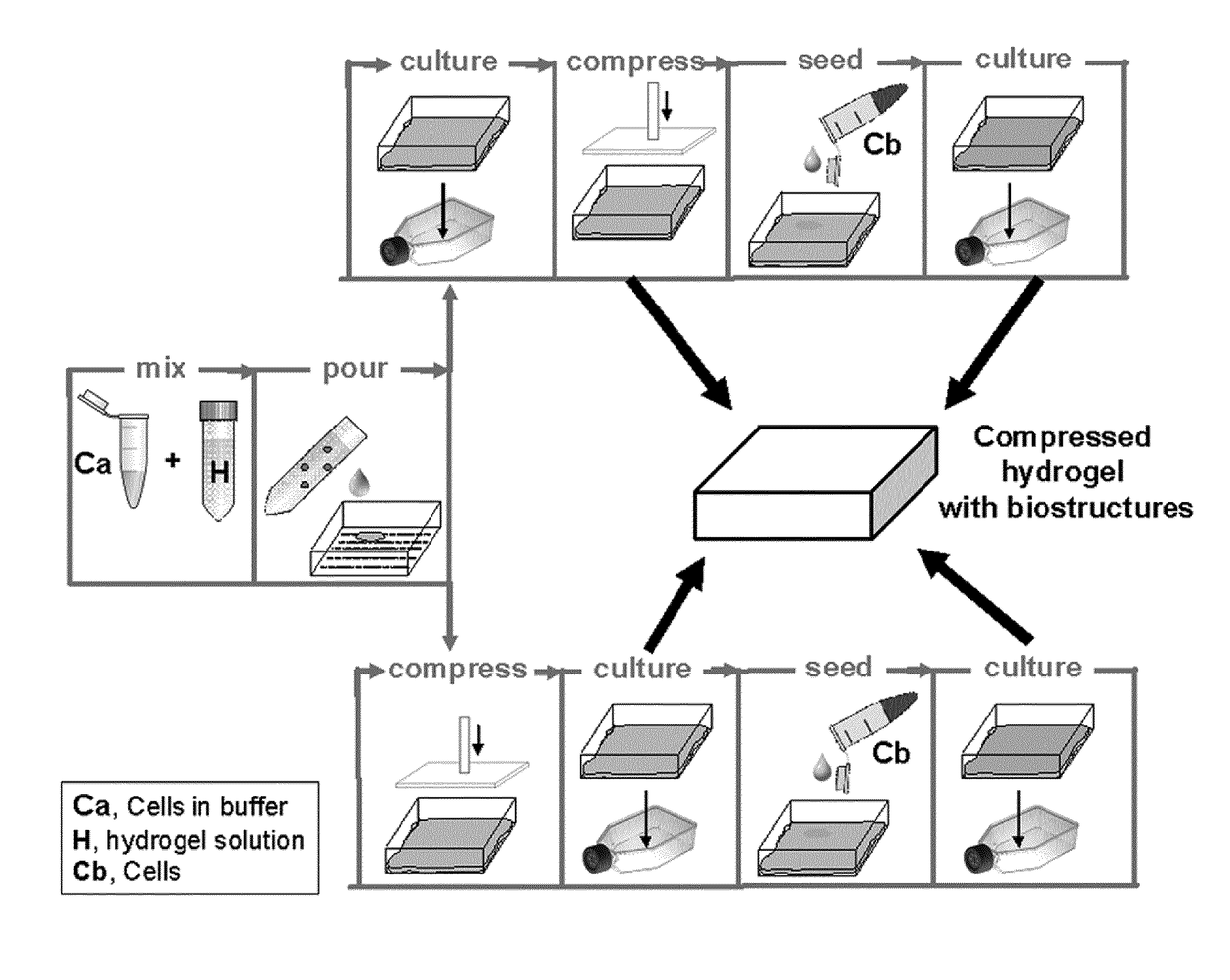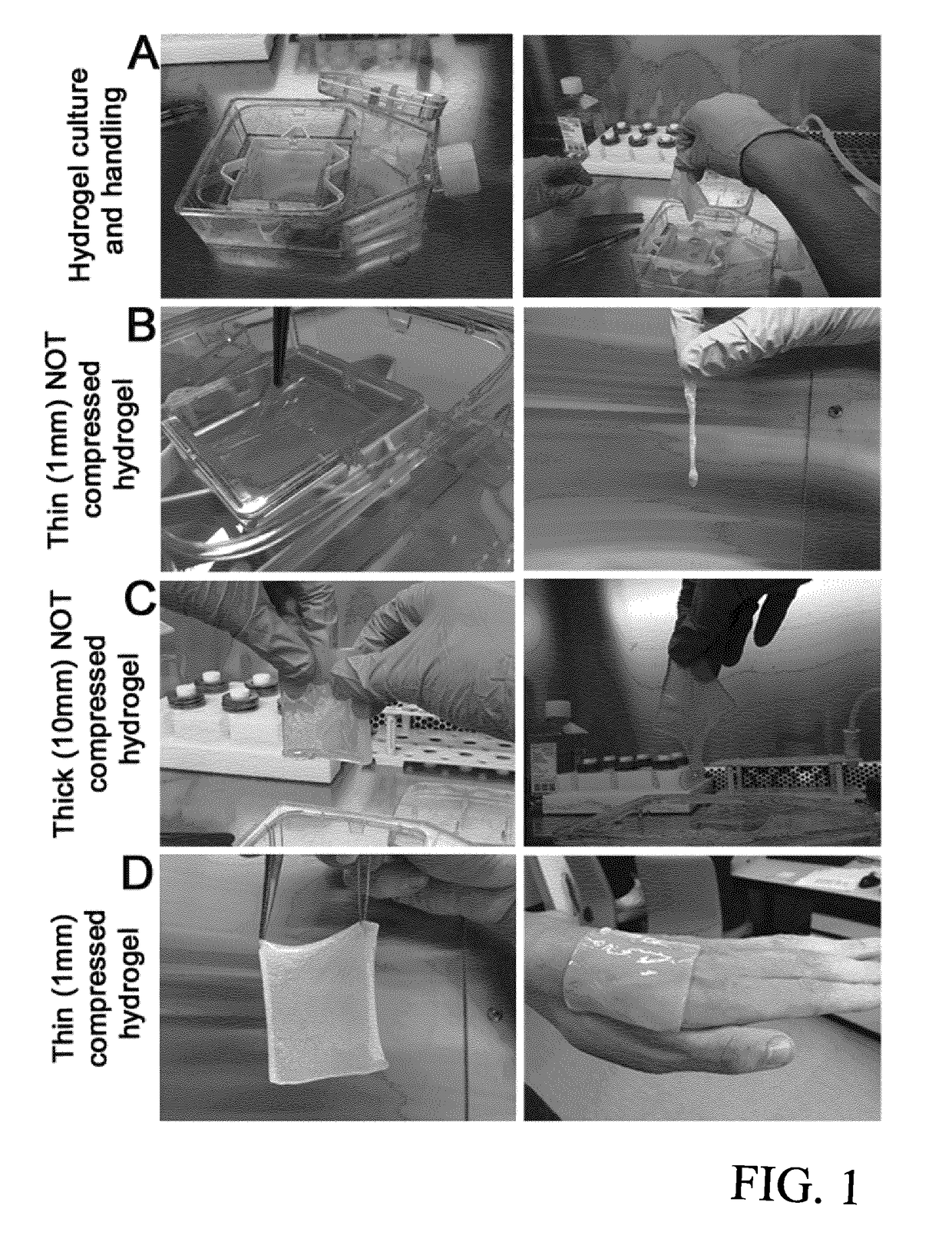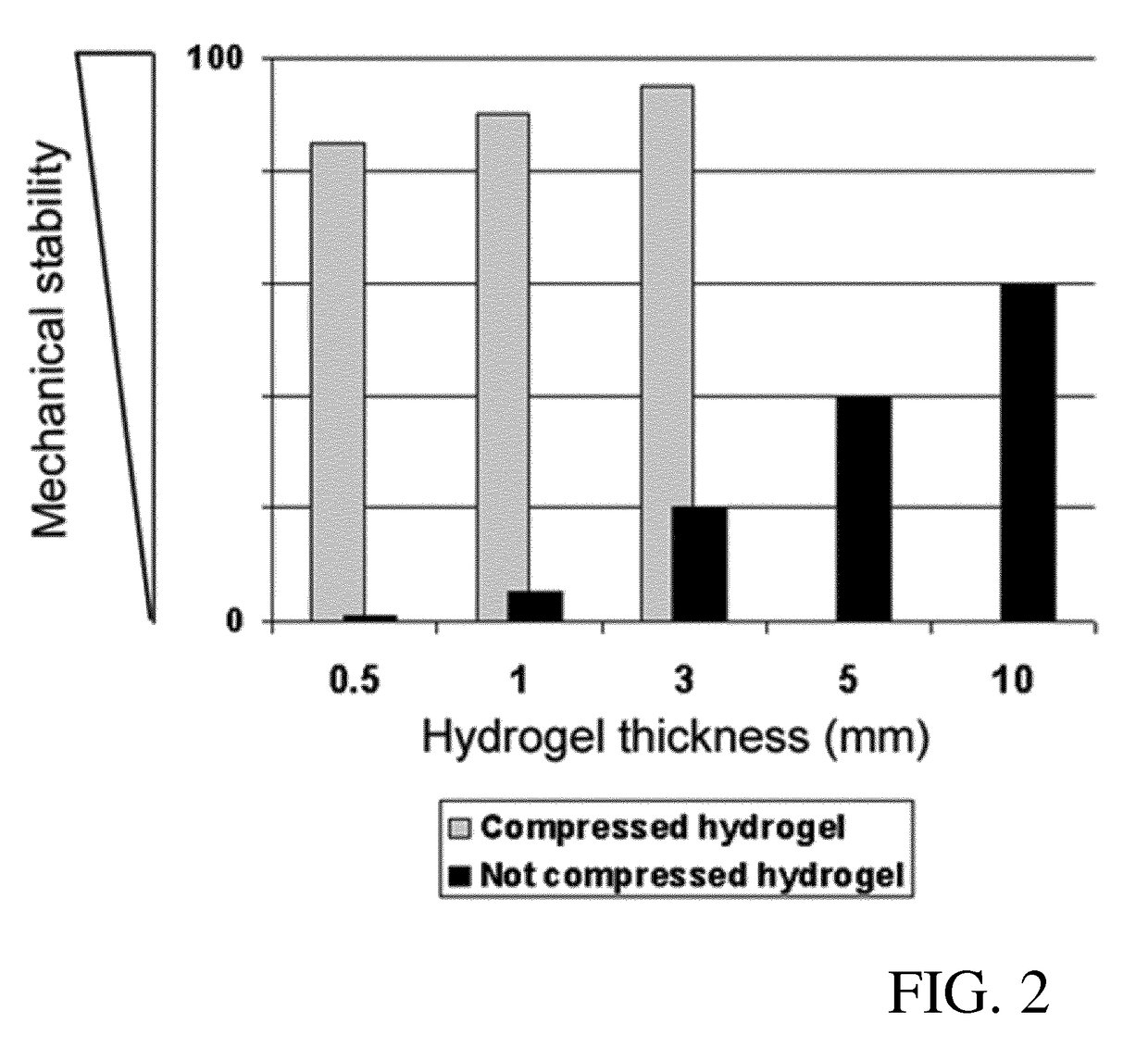Tissue graft
a technology of tissue grafts and skin substitutes, which is applied in the field of tissue grafts, can solve the problems of limited data available on the engineering of human lymphatic capillaries, no data available on the bioengineering of prevascularized dermo-epidermal skin substitutes containing functional human lymphatic capillaries, and achieves rapid and efficient oxygen access, rapid and efficient regeneration, and differentiation of skin transplants.
- Summary
- Abstract
- Description
- Claims
- Application Information
AI Technical Summary
Benefits of technology
Problems solved by technology
Method used
Image
Examples
example 1
[0069]Production of Uncompressed Prevascularized Dermo-Epidermal Skin Grafts Containing Blood and Lymphatic Capillaries
[0070]The transplantation of human dermo-epidermal skin grafts containing vascular (blood and lymph) plexus onto rats was monitored. First, skin grafts were created in vitro using CD31 positive (CD31+) HDMECs, human CD90 positive (CD90+) fibroblasts, and human keratin5 positive (K5+) keratinocytes in fibrin hydrogels.
[0071]Both cell types constituting the dermal compartment of the graft were arranged underneath several layers of keratinocytes, the epidermal compartment (made visible and verified by confocal micrograph). These skin grafts were then transplanted onto wounded backs of immunoincompetent nu / nu rats using a Fusenig chamber to avoid competitive, lateral ingrowth / overgrowth of rat keratinocytes. Two weeks after transplantation, the human skin substitute was surgically removed from the rat underlying tissue and analysed for dermal structure and neovasculariz...
example 2
[0087]Production of Uncompressed Prevascularized Dermo-Epidermal Skin Grafts Containing Blood Capillaries Generated by SVF Cells
[0088]The transplantation of human dermo-epidermal skin grafts containing a blood vascular plexus onto rats was monitored. First, skin grafts were created in vitro using SVF cells and keratinocytes in fibrin hydrogels.
[0089]SVF cells were arranged underneath several layers of keratinocytes, the epidermal compartment (made visible and verified by confocal micrograph). These skin grafts were then transplanted onto wounded backs of immunoincompetent nu / nu rats using a Fusenig chamber to avoid competitive, lateral ingrowth / overgrowth of rat keratinocytes. Two weeks after transplantation, the human skin substitute was surgically removed from the rat underlying tissue and analysed for dermal structure and neovascularization. The vascularized neodermis supported stratification of the overlaying epidermis. Immunofluorescence analysis after 2 weeks revealed the pres...
example 3
[0098]Production of Compressed Prevascularized Dermo-Epidermal Skin Grafts
[0099]Materials and Methods for Example 3:
[0100]Human cells (keratinocytes, fibroblasts and endothelial cells) were isolated as described above. Tissue grafts were prepared from hydrogels of 7×8 cm size as described below with reference to FIGS. 7-10. To obtain mechanical stability, modified plastic compression was performed with the compression device according to EP 13 174 441.
[0101]Preparation of the Hydrogel (as shown in FIG. 7):
[0102]As shown in FIG. 7, an insert frame (A) and an insert (B) are placed into a tissue culture flask of 115 cm2. 1 million fibroblasts / endothelial cells (ratio 1:1) are resuspended in 4 ml endothelial cell medium (“cells”). 18±1 ml of collagen hydrogel is poured in a tube (“hydrogel”). 850 μl of Acetic acid filtered are added to the “hydrogel” (“mixture”). The “mixture” is mixed by gently pivoting the tube.[0103]Addition of 7.5±0.2 ml of Reconstitution buffer to the cells (“cells...
PUM
| Property | Measurement | Unit |
|---|---|---|
| thickness | aaaaa | aaaaa |
| physiological size | aaaaa | aaaaa |
| thickness | aaaaa | aaaaa |
Abstract
Description
Claims
Application Information
 Login to View More
Login to View More - R&D
- Intellectual Property
- Life Sciences
- Materials
- Tech Scout
- Unparalleled Data Quality
- Higher Quality Content
- 60% Fewer Hallucinations
Browse by: Latest US Patents, China's latest patents, Technical Efficacy Thesaurus, Application Domain, Technology Topic, Popular Technical Reports.
© 2025 PatSnap. All rights reserved.Legal|Privacy policy|Modern Slavery Act Transparency Statement|Sitemap|About US| Contact US: help@patsnap.com



